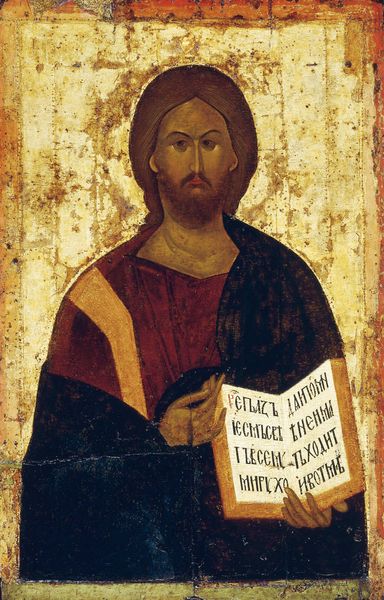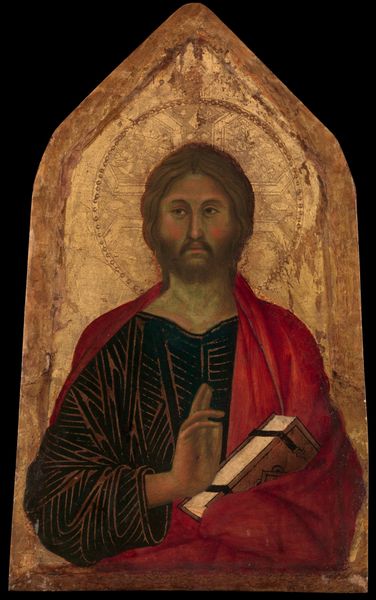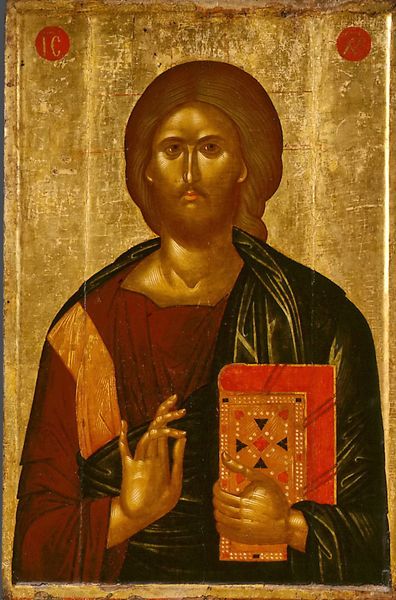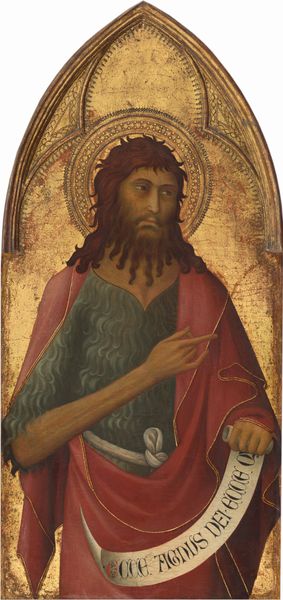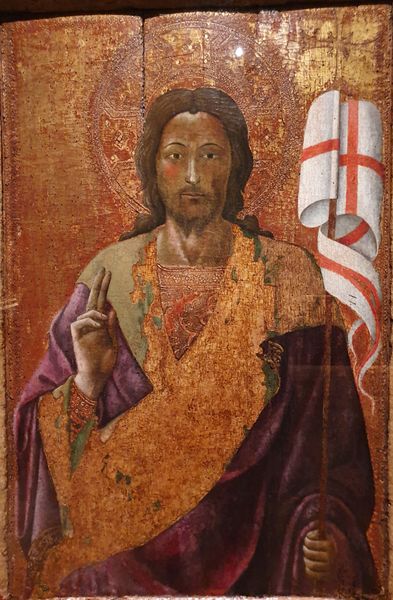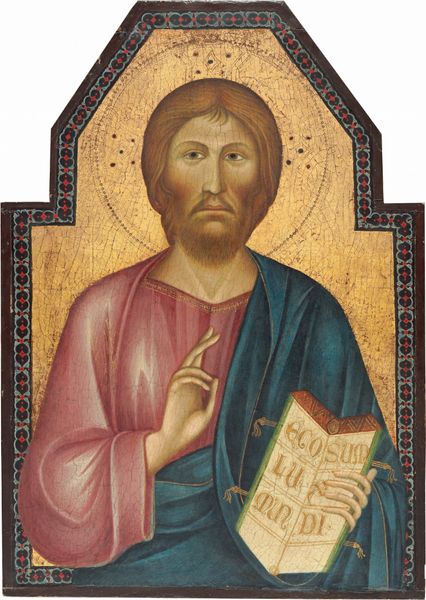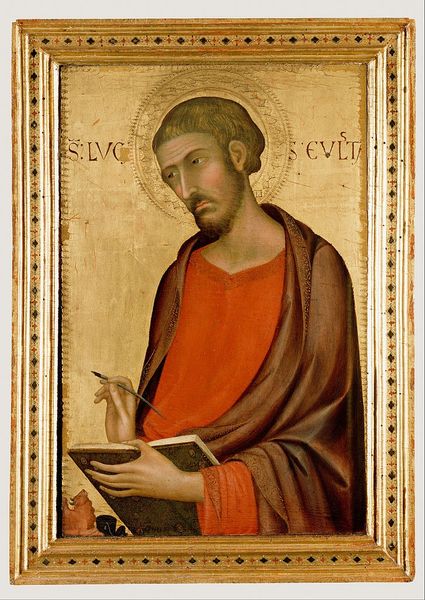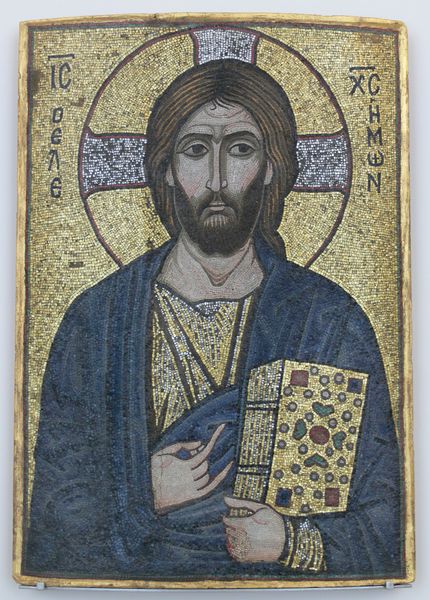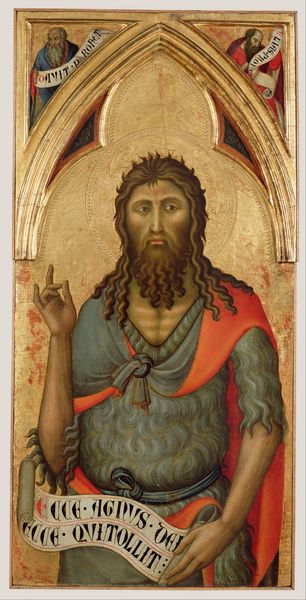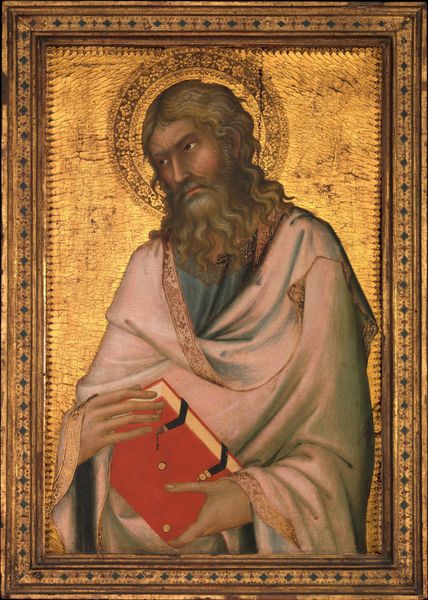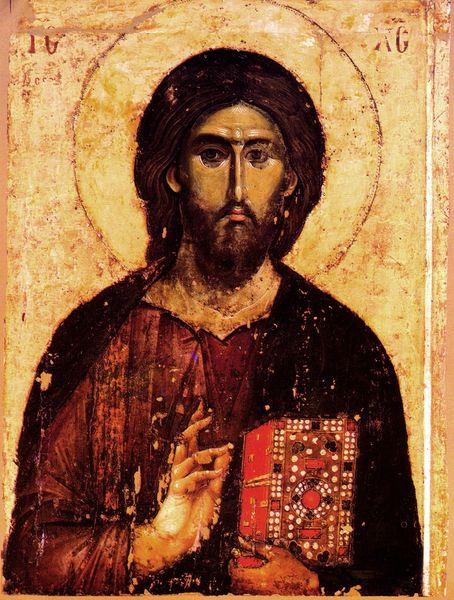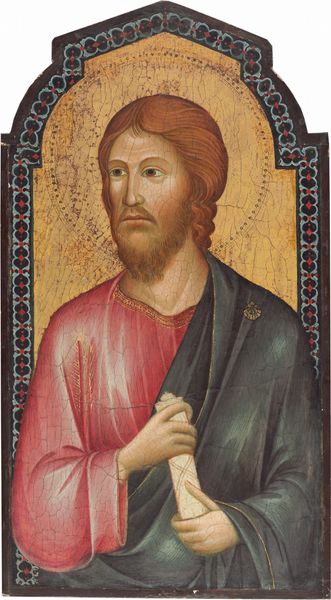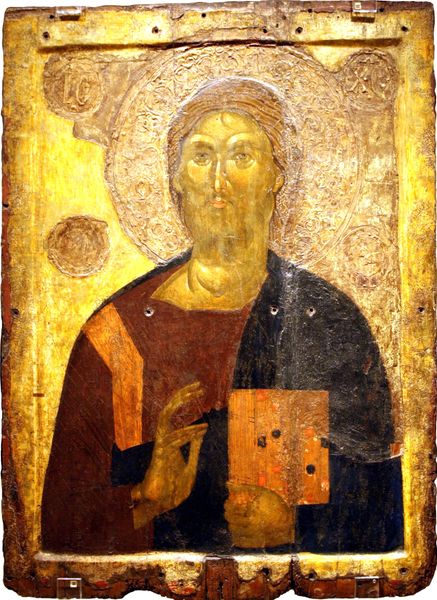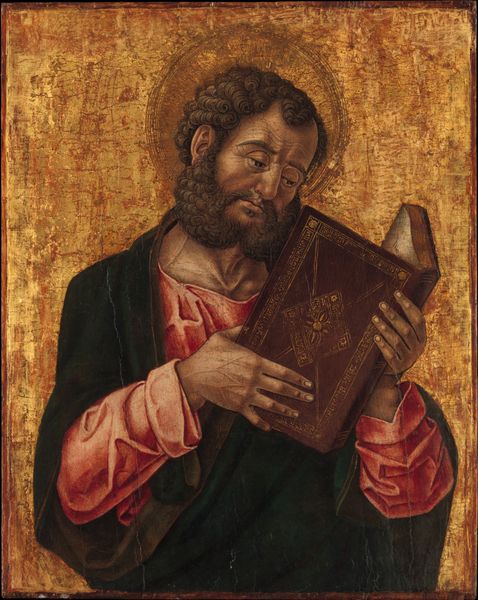
tempera, painting
#
portrait
#
tempera
#
painting
#
figuration
#
oil painting
#
history-painting
#
italian-renaissance
#
portrait art
Copyright: Public domain
Curator: Standing before us is "Christ Blessing," a tempera painting attributed to Luca di Tommè. Editor: My initial impression is one of quiet solemnity. There's a textural richness that hints at the labor and materials involved in its creation. I’m intrigued by the subtle cracking of the paint surface. Curator: Absolutely. Tommè was a prominent figure in 14th-century Siena, and this piece reflects the artistic conventions and religious fervor of the time. Consider the role such imagery played in devotional practices. Editor: The gilding around the halo isn't just ornamentation, but the product of meticulous craftsmanship. These shiny areas surely took days to perfect with thin layers and then burnishing; gold leaf isn't just precious materially, it symbolizes spiritual significance while standing out by contrasting with the matte pigments. Curator: Indeed. And notice how Christ's gaze and gesture of blessing, combined with the open book, create a direct connection with the viewer, reinforcing the Church's teachings. This painting embodies power relationships. Editor: Yes, and there’s also a certain humility in the simplicity of the robe’s construction and drape; it feels…worked. I imagine this piece in the context of workshops, apprenticeship, and the economics of art production at the time. How was the patronage structured? Curator: Siena in this era experienced fierce competition between families and factions, and art became a powerful tool to flaunt one’s status; commissions became vehicles for proclaiming religious and political convictions. Editor: I wonder about the source of pigments. The blues for the robe might have come from overseas trade—exotic lapis lazuli transformed through labor into ultramarine—what we now see as just the color blue in a religious scene tells a fascinating tale. Curator: Examining "Christ Blessing," reveals more than an artistic display—it displays artistic conventions employed at the time that carry a multitude of socio-political contexts. Editor: It also encourages us to look more closely and examine materials; there is a whole complex process involved in constructing even one figure in an artwork—not just depicting someone holy in that period, but showing what makes him important, and powerful, at the same time.
Comments
No comments
Be the first to comment and join the conversation on the ultimate creative platform.
